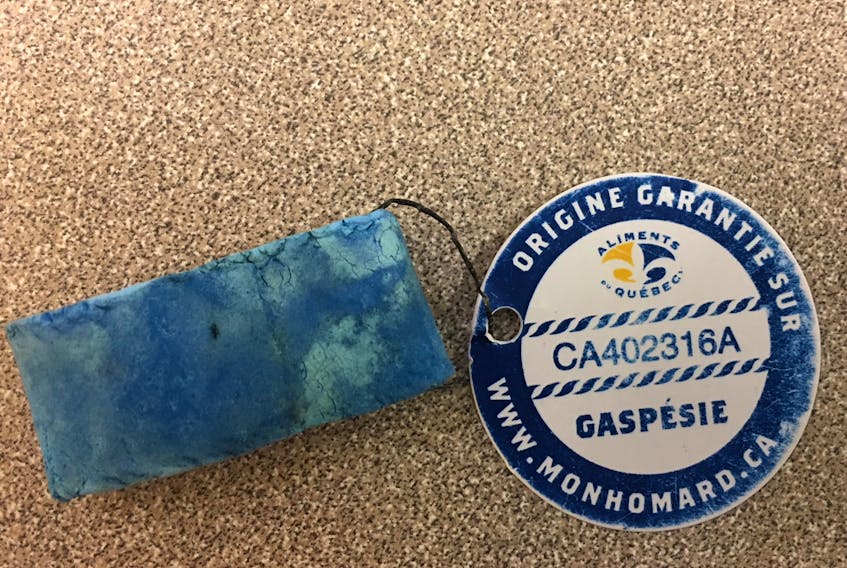YARMOUTH, N.S. - A walk along your nearest beach could very well be marred by the sight of thousands of multi-coloured lobster bands strewn along the high-water mark this time of year.
Where did they come from?
When lobsters are removed from traps, a rubber band must be placed on their snapping claws to prevent them from damaging each other during storage. The job is a tough assignment at the best of times. Combine a feisty lobster, cumbersome gloves and a swaying boat, and a pretty good percentage of those rubber bands end up on the deck. They’re small and a nuisance to pick up so they’re often just swept or hosed off the boat into the ocean. Other times, like an elastic, they snap off and fly into the water as fishermen are fastening them to a lobster’s claw.
The multitude that end up on shorelines isn’t pretty and some who have seen them ask a common question.
Why don’t lobster fishermen go back to the old-fashioned, environmentally friendly solution of using wooden pegs for the same purpose?
Over 80 million plugs were made and sold in 1978 to markets from New York to Newfoundland.
Vernon D'Eon, former owner of Vernon D’Eon Lobster Plugs Ltd., says there are several reasons why the switch was made.
The wooden lobster pegs were inserted under the lobster’s claw hinge joint to prevent claws from opening.
“It was a short-term fix but not a long-term one for holding lobsters,“ he said.
If the peg penetrated the tail section of the lobster and caused a hole, it could be subject to disease.
The blood disease could wipe out thousands and thousands of pounds of lobster in no time.
The lobsters were sometimes stored in tidal ponds, as these were the days before climate-controlled pounds and they’d cram together in corners, “like ants.”
The marking of the meat in the claw area also caused a dark grey mark on the meat.
Industry buyers asked fishermen to switch to rubber bands.
D’Eon does have good news about the lobster bands littering the shore.
“They rot,” he said.
“The bands that float are as pure as rubber as can be. Rubber doesn’t like air or light and they’ll just disappear over time.”

Is it just local marine garbage we see?
A lobster band from Gaspésie, Que., found on False Harbour Beach, Cape Forchu, N.S., begs the question – how far away can lobster bands float from? It’s hard to tell.
Vernon D’Eon says a local lobster buyer may have brought in crates of lobsters from the Gaspésie area and the band could have floated off when the crate was open.
David Brickman, a research scientist with Fisheries and Oceans Canada, says it’s possible the band could have floated here from Gaspésie on the Nova Scotia current. The current runs parallel to the province’s coastline from Sydney, Cape Breton, past Yarmouth. It circles the Bay of Fundy and then becomes the Gulf of Maine coastal current flowing down to Cape Cod. Marine debris, particularly that which is drifting on surface currents, has a lot of variability in direction due to winds.
“The Nova Scotia current flows something like 10-20 centimetres per second. That’s about 15 kilometres per day or 250-500 kilometres per month,” said Brickman.








